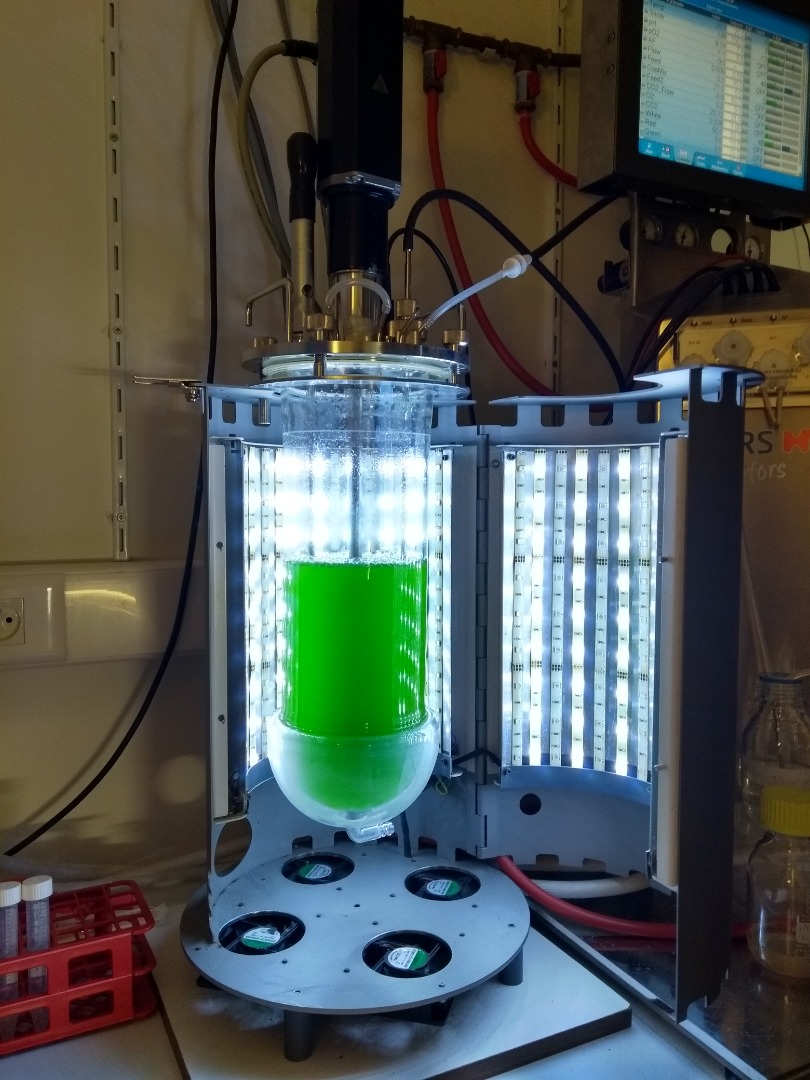The three litre reactor used by Ghent University in their lab scale experiments.
Encouraging results obtained from phosphorous supplementation experiment

The results were surprisingly positive and we achieved the highest living cell count we could achieve with liquid fraction of digestate.
Adding inorganic phosphorous to digestate has helped increase the living cell count in algae grown on a liquid digestate. This has been the encouraging result from a series of experiments run by ALG-AD partners in Ghent University.
While liquid fraction of digestate is a good microalgal growth promoting nutrient source when it comes to both soluble and total nitrogen, the concentration of soluble phosphorous is often lower, and this can limit the growth rate and biomass productivity. This is primarily because of unbalanced soluble nitrogen-phosphorus ratio. Therefore, in order to increase the amount of digestate being used to grow the algae, it is sometimes necessary to supplement the mix with additional phosphorous.
“We recently conducted algal growth experiments using pre-treated liquid fraction of digestate from an INNOLAB outsourced biogas plant” said ALG-AD researcher and PhD student Jai Sankar Seelam. “We found that the dissolved phosphorous concentration was particularly low in this digestate as the biogas plant operator aims for maximum removal of both soluble and particulate phosphorous from liquid fraction in their digestate treatment line. So we had to supplement the supply of phosphorous with an artificial soluble source”.
“The results were surprisingly positive and we achieved the highest living cell count we could achieve with liquid fraction of digestate. And this was achieved just by adding inorganic phosphorous only. From these experiments we can imply that the digestate provides sufficient micronutrients and trace metal elements for microalgal growth and that the larger number of living cells, the greater the chance of cell division. This will eventually lead to high biomass by dry weight and increased annual productivity.”
The team at Ghent University are now liaising with partners at INNOLAB to scale up these experiments to pilot scale once they have repeatedly tested the hypothesis at lab scale.
